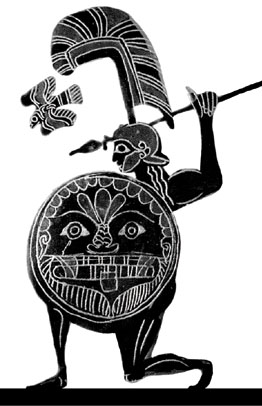 |
 >
Roman Life >
Roman Life
Slavery
Early Roman times, very few slaves, which were used for farmwork.
Most manual labor later became slave labor.
Plebeians = lower, poor class, had no slaves.
Numbers of Slaves – Unknown. Few in early times, many in later times.
Scipio Aemilianus – 60,000 Carthiginians, Marius -140,000 Cimbri,
Aemilius Paulus – 150,000 greeks, Pompey/Caesar 1 million Gauls/A
Under Empire, known, most citizens had at least 10 slaves. Some had 400, 4000, 10,000
20,000 slaves.
Supply -> prisoners of war. Sold quickly (troublesome in hostile territory). Sub hasta venire +
Sub corona venire = to be sold into slavery. Spear = sign of public sale.
Sale supervised by quaestor.
In Empire, slaves bought from Numidia, Alexandria, Cyrene, Greece, Epirus Illyria,
Cappadocia.
Natural increase in population -> contubernia.
Good for individual owner. Slaves acclimated, trained from childhood. -> Vernae
Sales -> public auctions -> supervised by aediles. Tax imposed on imports. Imports: white chalk
A scroll from neck had slave¡¯s characteristics: name, nationality, free from diseas
Tendency to steal, run away, suicide
No guarantees -> cap on head
Seller make guarantee, if not on scroll and have defect, must take him back in 6
months or refund.
Private sale for special slaves.
Prices – Supply/demand, characteristics, accomplishments, requirements of purchaser
Battlefield slaves -> cheap, feared loss due to disease, suicide, fatigue.
$1 in Lucullus¡¯ camp.
In Rome, $100 for laborer to $28,000 for educated grammarian.
$4000 for trained/educated boys
Often slaves matched up in color,etc.
Public slaves -> better off, assistants for magistrates, care for public buildings, night fire men
Lictors (attendants to official), jailers, executioners.
Private slaves -> familia urbana = slaves in personal service of master
Some slaves kept for hire/work on master¡¯s business, such as farm hands (familia rustica)
Industrials: many types. Some slaves might get help from master to run business, pay
back master with interest or pay fixed annual sum or a share.
City slaves – had only one type of job to do. Nutrix, paedagogus -> for children
Nomenclator = slave who prompted master of names of correspondents, people met on street.
Accountants, secretaries, agents
Dominica potestas (master of slave, power absolute). Slave different from son -> death of master
no free slave, can¡¯t hold property, could testify only under torture. Public opinion helped
him not
Cruelty to slaves -> not profitable/economical, but done.
Food of Slaves – fed on coarse food, grain, fallen olives, salt fish, sour wine.
Received tunic every year, cloak and wooden shoes every 2 years
Difficulty of Escape – could not escape, became a bandit if left. Marked with ¡°F¡±, or metal collar
on neck.
Slaves¡¯ Property -> peculium -> permission from master -> vicarius (slave of a slave)
If died, property went to master. Public slaves were allowed, however, to dispose of
half of property by will.
Punishments
Beating, flogging with lash -> lash made of cords of leather -> bone pieces/metal buttons
Called flagrum/flagellum.
Furcifer -> fastened arms and legs, no movement. Forked log
Carnifex (executioner) -> the slave who punished the slave. Called Carnifex for the time
Harder labor: farm -> grinding mills -> quarry work -> wearing heavier shackles for
quarry work, less hours of rest -> gladiators.
Torture for actual crimes -> crucifixion -> wife and children of slave -> all slave
punished if offender not found.
Crux = cross. [I] ad [malam] crucem.
Manumision -> liberty cap -> master set free slave -> libertus, libertinus (as one of the class)
Became patron and freedman (client) -> mutual benefits.
|

